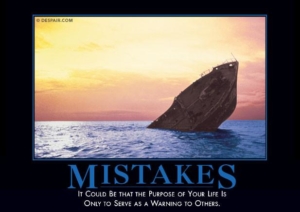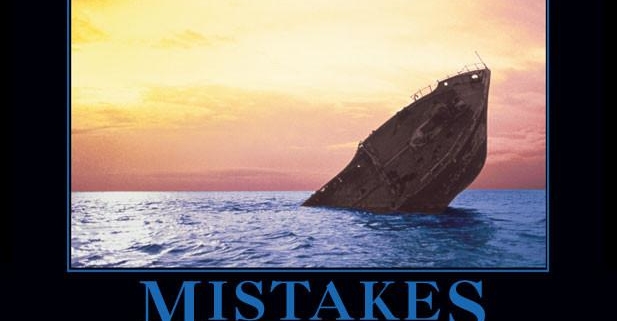Medical Devices: learn from my mistakes
That sounds like a success, but years later I learned that our product caused pain and suffering for some patients and added useless healthcare costs to everyone.
In this article you can choose your adventure, choosing which you’d like to see addressed after 15 more years of experience in:
- Design Controls
- Risk Management
- Government Regulations: FDA and EU-MDR
- Entrepreneurship

Background


At the time, patients with wrist fractures were treated with a cast that restricted motion for six weeks or more. Patients suffered long-term damage to wrist ligaments that atrophied from lack of motion.

Physicians treated wrist fractures with casts because medical implants were bulky and ruptured tendons. That changed when a physician designed a plate that fit under a naturally occurring lip in the bone. The lip protected tendons, and patients could begin rehabilitation exercises within four days. Surgical journals published successful outcomes, which led to physicians switching from casts to distal radius implants.
The distal radius market was worth hundreds of millions of dollars each year, so our company wanted quickly design and commercialize a competitive plating system. The original plate had fixed-angle screws, oriented in a direction that minimized risk to soft tissues but couldn’t reach some bone fragments. We invented and designed adjustable locking screws, allowing bone fragments to be grabbed, pulled tightly, then locked in place.

Over the following few years, I learned that patients were being hurt as the new company continued sales without addressing the risks that our team knew about. It’s not their fault. We hadn’t documented our knowledge in a plan that was clear, unambiguous, and easy to understand for the new team. And, it’s not our company’s fault. I managed both engineering and marketing; I was an inventor on the technology, trained our sales representatives, and approved all quality assurance documents including design controls and risk management.
Risk Management
- If a screw were not inserted flush with the plate, tendons could be exposed to sharp edges and rupture.
- If a surgeon stripped a screw it could become stuck, not flush with the plate and unable to move forward or backward, and require additional surgical time and exposure to replace.


Our plan was sufficient for regulatory approval and quality system audits, but was useless for continuous improvement. We relied on our work-ethic. Our daily work adjusted based on short-term needs rather than a long-term vision. We did not realize the importance of risk planning, nor did we understand how to document an effective plan. At the time, we did not know that we did not know this; in other words, we did the best we could with the regulations and standards of 2004.
Now, I have 15+ more years of experience. In another article, I reanalyze our implant system using the modern standard for risk management, ISO14971.
Sales and Reimbursement
 Our product was reimbursed by insurance companies for almost twice as much as competitive products because of a loophole I had realized and exposed to our sales management.
Our product was reimbursed by insurance companies for almost twice as much as competitive products because of a loophole I had realized and exposed to our sales management.
Our company used an indirect sales representatives, approximately 185 independent sales professionals who sold products from multiple companies. They worked on commission and were incentivized to sell products that were reimbursed more.Our executive management and board of directors were negotiating our company’s value, which was based on sales growth, therefore they were incentivized to continue growing sales rapidly.
That loophole in insurance reimbursement still exists. To stay focused, I’ll discuss sales and reimbursement in other articles. For now, understand that applying reimbursement laws creatively isn’t unethical; companies must continuously balance their business goals with personal beliefs, money lost to research and development, and competition from similar companies.
People in many industries juggle conflicting priorities, but healthcare is unique because patients rarely have choices or they are unaware of how medical devices are chosen and paid for. Patients are also unaware conflicts of interest that may influence physicians who advise risky medical treatments. Governments try to protect patients by requiring medical device companies to follow regulations.
Government Regulations
FDA loopholes are summarized in a late-night comedy news show, Last Week Tonight, which is tailored towards adult audiences and politically charged but factual. In other words, the show is a fun way to learn about topics that aren’t considered fun, such as deaths from medical devices.
You can also watch The Bleeding Edge, a documentary film about loopholes in U.S. medical device regulations. It focuses on five devices and people who continue to suffer from them.
Fortunately, we live in a democracy and can influence change once society understands a problem and voices concern. The citizens of Europe demanded safer healthcare from elected officials, which lead to the new European Union Medical Device Regulation. Beginning in May 2020, the new regulation will be required to sell any medical device in the European Union.

Lessons Learned
- Design Controls per FDA and ISO
- Risk Management per ISO 14971
- European Union Medical Device Regulations (EU-MDR) required starting May 2020
I also share lessons throughout my blog, like tips for patenting new inventions, ways to innovate faster, how to increase focus, etc.
Regulations
I appreciate the new European Union medical device regulations and hope the United States adopts many aspects, such as having products continuously improve based on the safest competitive options available. Patients receive safer products, efficient companies thrive, and healthcare can be profitable enough to reach more people.
Entrepreneurship
To bring healthcare to more people, we will need socially responsible entrepreneurs and government that balance safety regulations with room for innovation. The EU-MDR gives entrepreneurs clear goals: innovate safer technologies that are user-friendly and cost-effective. The regulations reward the least-risky products, which are products that have effective risk plans and design controls.
A lesson for entrepreneurship or career goals is to never complain. Change something, yourself or the situation. People happy in their careers learn to be positive, proactive, and useful to others. Aspiring entrepreneurs should understand a few concepts:
- Empathize with your customer. What problem of theirs are you solving, what need of theirs are you addressing, and how can they pay for it.
- Create value. Grow sales or pursue a patent. Provisional patents cost $100 and protect your idea for one year while you improve prototypes and raise funds.
- Empathize with your investors. Investors can be friends, family, small business grants, crowd funds, angel investors, or venture capitalists.
But, learning to be an entrepreneur by reading articles is like learning to ride a bicycle by reading instructions; no amount of reading beats the experience of continuously improving based on real-world data.
Management

Effective planning is challenging for a large organization because people have different perspectives of what is clear, easy to understand, and unambiguous. To be successful, focus on team building. Each company must help employees understand the concept of continuous improvement on a personal and organizational level.

